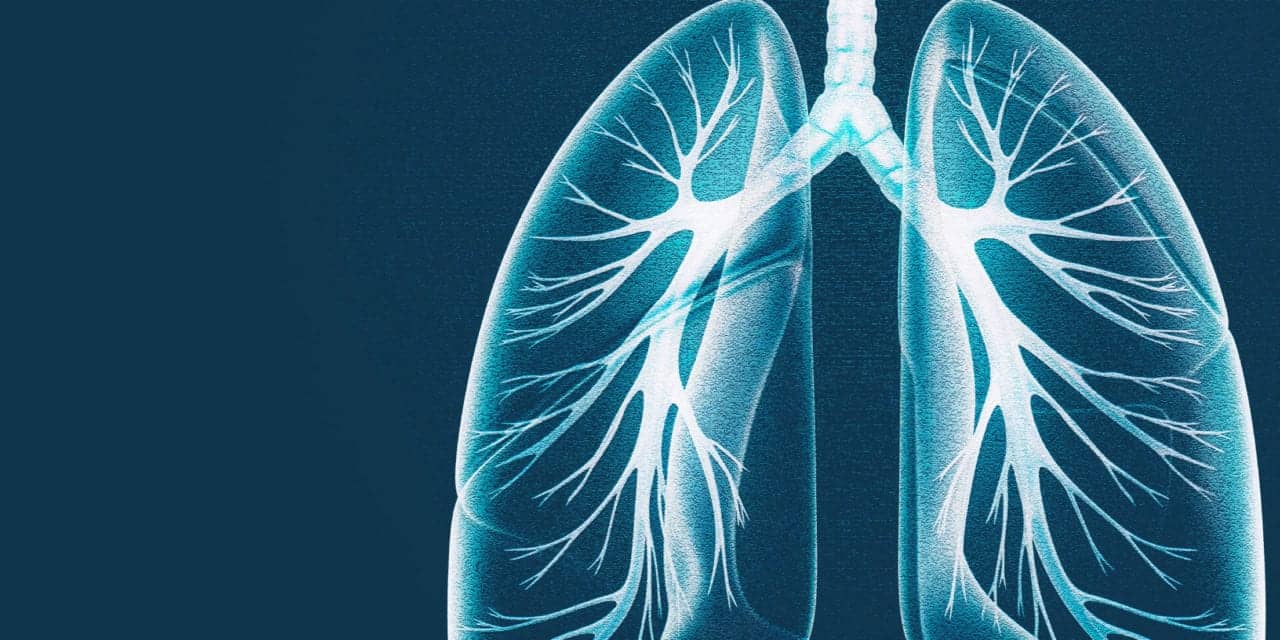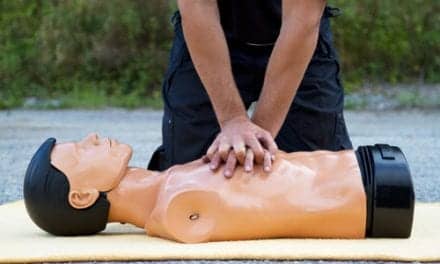Hyperbaric oxygen may reduce hospital days for chronic wound patients by restoring a favorable cellular milieu for enhanced healing and antibacterial effects.
By Joe Noland, RRT; Kelly Boyd-Noland, RRT; and Paul Mathews, PhD, RRT, FCCM, FCCP
Hyperbaric oxygen treatment is defined as the inhalation of 100% oxygen while the environmental pressure is raised to levels greater than 1 atmosphere absolute (ATA). A human body is normally under 1 ATA (760 mm Hg) of pressure.1 Elevated pressure is obtained by using a hyperbaric chamber. This elevated pressure, when exerted on the body, allows more oxygen to be dissolved in the blood. Enhanced healing of wounds is among the major benefits derived from an increased blood oxygen level.
Normal Healing
A chronic wound is one that fails to progress through a normal, orderly, and timely sequence of repair (or one that does not heal within 6 weeks). Normal care for chronic wounds includes proper cleansing, irrigation, dressing applications, surgical debridement, and closure. The function of the dressings varies. They can absorb exudate, hydrate, provide mechanical and chemical debridement, and protect or cover the wound. The types of dressings used and the timing and methods applied to changing them are not covered by standardized routines; instead, these decisions are based on assessment of the wound.
Despite this individualized regimen, wounds that are continuously subjected to a hypoxic environment can persist because of the resulting decreases in fibroblast proliferation, collagen production, and capillary angiogenesis.
Review of the Literature
Hyperbaric oxygen has several mechanisms of action that affect the patient. In the United States, hyperbaric oxygen is used for chronic wounds more than for any other indication. The mechanism most important to wound care is neovascularization, the formation of new blood vessels by increasing the oxygen gradient from the wound to the surrounding tissue. Wound healing will progress only as long as a sharp tissue oxygen gradient exists between the wound margin and its center.
In large part, chronic wounds are caused by arterial insufficiency.2 One factor limiting the healing of wounds is the lack of adequate oxygen transport to injured tissue; if present, it would facilitate oxygen extraction by cells. Increases in tissue oxygenation alone can decrease the size of necrotic tissue lesions.1 Wound healing also accelerates metabolic processes, consuming more oxygen. An adequate supply of oxygen (as well as a means of removing carbon dioxide) is essential for this healing process. Although these positive effects have been supported in recent literature, hyperbaric oxygen still cannot replace surgical revascularization in advanced insufficiency, and it cannot reverse inadequate microvascular circulation.3
Two mechanisms that work closely together in the healing of chronic wounds are hyperoxygenation and its subsequent bactericidal effect. Assuming that 100% oxygen reaches the gas exchange units in the lung and that ventilation is within normal limits, the partial pressure of alveolar oxygen (PAO2) can climb as high as 2,100 mm Hg at 3 ATA. This elevated PAO2 enhances the body’s ability to kill bacteria through the formation of oxygen free radicals; thus, hyperbaric oxygen is toxic to anaerobic microbes and certain aerobic species.2
Another hyperbaric oxygen mechanism of action is vasoconstriction. This, by itself, may blunt the delivery of oxygen to the tissues. The mammoth increase in plasma dissolved oxygen content due to the hyperoxygenation mechanism, however, results in a net gain in oxygen delivery to the wound.1
By definition, a wound has destroyed a portion of the local circulation. This can facilitate infection, tissue hypoxia, and, eventually, tissue death.4 A method of staging is used to assess chronic wounds as they progress through these changes (see Table 1).
| • Stage I is a reddened area that does not blanch with pressure. No broken skin—only epidermis involved. • Stage II penetrates into the dermis, being a blister,abrasion, or shallow crater. • Stage III extends into subcutaneous tissue and may also present as a shallow crater. Undermining, tunneling, necrotic tissue, and/or exudate may be involved. • Stage IV extends into the fascia, involving muscle, joint, or bone. Undermining, tunneling, necrotic tissue, and/or exudate may be involved. |
| Table 1. Wound stages. |
The use of hyperbaric oxygen can restore a favorable cellular milieu in which healing and antibacterial effects are enhanced by hyperoxygenation. Hyperbaric oxygen is practical, safe, and attainable in most clinical settings. It provides the patient with a treatment modality that is more soundly grounded in research than any other therapy for chronic wounds.4 It is hypothesized that the addition of hyperbaric oxygen treatments to the normal wound care regimen also reduces the number of hospital days needed by the chronic wound patient.
Materials and Methods Subjects
Records of 60 wound patients at Vencor Hospital of Kansas City, Mo, were randomly selected over a period of 18 months for this retrospective study. The causes of the patients’ wounds varied, including diabetic wounds, pressure wounds, and amputations, but all were defined as chronic. The patients were divided into two groups of 30, with one group receiving hyperbaric oxygen treatments. Both groups received normal wound care based on the assessment of their wounds, and the decisions affecting such care were made independent of this study.
Wound Assessment
The wound assessment criteria of Vencor Hospital were used for this study. These criteria cover the location of the wound; its size and depth; the amount, type, color, and odor of exudate; tissue involvement (epithelial, granulation, necrotic eschar, or sloughing); and signs of infection such as induration, fever, erythema, edema, elevated white blood cells, and purulent drainage. All of the wounds were staged, based on these assessments, independent of this study. The patients were treated at Vencor Hospital. Wound stages I through IV were represented in the sample population (Table 2).
| Sample size (patients) N = 60 Male = 17 Female = 43 | Age (years) Range = 48 to 83 Mean = 71 | Hyperbaric oxygen treatments Range = 2 to 38 Mean = 19 |
| Table 2. Patient Sample. |
The number of treatments and the pressure level of each treatment were determined inde
pendent of this study. In addition, determination of which patients received hyperbaric oxygen was also performed independent of this study. Therapeutic pressure levels varied from 2 to 2.4 ATA. Trained personnel delivered treatments 5 days per week on average and treatment lasted for 90 minutes at the prescribed therapeutic pressure level. Patients received treatment in a monoplace hyperbaric oxygen chamber. Two chambers were available and were selected at random. The gas supply was always oxygen, and room air breaks were given via face mask or tracheostomy shield when appropriate. Normal methods of prevention of fire, barotrauma, seizure, and other risks were implemented at all times. All patients’ lengths of hospital stay were recorded from charts at Vencor Hospital and based on official admission and discharge dates.
Results
The mean hospital stay for patients receiving hyperbaric oxygen treatments and normal wound care was 53.9 days, with a median of 51 days. The SD was 20.78 and the variance was calculated at 431.707. Lengths of stay were 20 to 94 days, with a range of 74.
The mean hospital stay for patients receiving normal wound care without hyperbaric oxygenation was 66.8 days. The median was 65.5 days, the SD was 24.37, and variance was calculated at 594.007. Lengths of stay were 23 to 120 days, with a range of 97.
A wound-patient population mean of 54 hospital days was used to calculate values for the t-test. The t value was calculated to be 2.18. The critical value used was 2.660 (df = 60 and P < .005). The estimated SEM was calculated for each group at 3.85 for patients receiving hyperbaric oxygen and 4.52 for those receiving only normal wound care.
Cautions and Limitations
Caution should be used in applying the results of this study to a patient population. Its findings were based on normal distributions, but results suggest a skewed distribution, possibly explained by the relatively small size of the study (N = 60). It is possible that, as the size of the sample gets larger, results become more normally distributed (regress toward the mean). Another explanation could lie in the normal wound care delivered to each patient. Many variables exist in the healing of wounds that were not accounted for in this study. Examples of such variables are the age of the patient, the wound stage, the cause of the wound, the types of dressings used, and the presences of other diseases.
Further studies should control for each of these variables. For example, investigators might study 200 patients selected randomly from a population of people aged 50 to 60 years who had stage III pressure wounds requiring dry dressings and who had no other disease to keep them in the hospital. If such a population were divided randomly into two equal groups, one of which received hyperbaric oxygen, the possible error attributable to uncontrolled variables could be eliminated from the results; through factor analysis, each variable’s contribution to wound healing could be isolated.
Conclusion
The fact that hyperbaric oxygen has an effect on chronic wounds is a recent discovery. It has been shown that this effect is beneficial to the healing of wounds, but this benefit is still not well defined. As more specific studies are performed concerning hyperbaric oxygen treatments, their true benefits will become clearer.
RT
Joe Noland, RRT, is a first year medical student at the School of Medicine, University of Kansas Medical Center, Kansas City; Kelly Boyd-Noland, RRT, is a respiratory therapist at Apria Healthcare, Lenexa, Kan; and Paul Mathews, PhD, RRT, FCCM, FCCP, is associate professor of respiratory care education at the School of Allied Health at University of Kansas Medical Center.
References
1. Magnant CM, Milzman DP, Dhindsa H. Hyperbaric medicine for outpatient wound care. Emerg Med Clin North Am. 1992;10:847-860.
2. Tibbles PM, Edelsberg JS. Hyperbaric oxygen therapy. N Engl J Med. 1996;334:1642-1647.
3. Grim PS, Gottlieb LJ, Boddie A, Batson E. Hyperbaric oxygen therapy. JAMA. 1990;263:2216-2220.
4. Davis JC. Enhancement of healing. In: Camporesi EJ, Barker AC, eds. Hyperbaric Oxygen Therapy: A Critical Review. Kensington, Md: Undersea and Hyperbaric Medical Society; 1991:127-140.
5. Pilbeam SP. Fundamentals of biostatistics. Respiratory Care. 1980;25:154-172.










